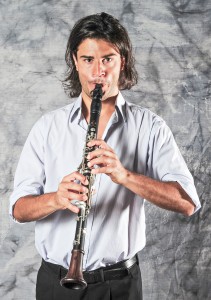Experiencing aesthetically the concept of peace
By Elías Abraham Foscolo
Aesthetics – being shaped by the senses – means art. And vice versa. Beauty is the main factor to recognize as the aesthetical component within an artistic experience. Whichever may be the artistic environment experienced – music, dance, theatre, film, poetry – the concept of the aesthetics is associated to the subjective capacity of experiencing the outside world and the way that impacts inside the person.
Indeed, it is an experimental process aiming to resonate with the beauty of the universe – word beauty here as metaphoric approach of peace; hence a type of beauty which aesthetically aims to be eternal, pure and human. Following this idea, an aesthetic experience of beauty is related to identifying an inner peace and such a process is an authentic artistic desire to be touched by the act of love.
Actually that is what empowers and makes the person aware of who she or he truly is; and in consequence allows the unfolding of his/her own peace and artistic inner potential.
For me the aesthetics of the art is a synonym of the aesthetics of peace.
John Paul Lederach makes explicit this: [How do we practice the aesthetics of peacebuilding? Like art itself, there is no single technique by which it can be pursued and at the same time it cannot be created without discipline].
Lederach connects the aesthetics of peacebuilding with the aesthetics of the arts by using the creative moments as the time frame. Such moments allow the person to imagine or envision the inner beauty, which from this perspective are always artistic inner processes and hence aesthetic experiences of peace: […moments of the aesthetic imagination, a place where suddenly, out of complexity and historic difficulty, the clarity of great insight makes an unexpected appearance in the form of an image in a way of putting something that can only be described as artistic].
Here it is also important to acknowledge the centrality of visual channels and the courage to dream moments of change and enlightenment; especially within conflict transformation. Lederach’s way of addressing the aesthetic-of-peace-as-something-experimental appears metaphorically in the form of an image.
If an aesthetic experience of peace is a subjective fact, then its contextualization might be a non-judgmental experience – at least from a critical perspective.
Lederach adds to this imaginative/creative process also a moral duty: [As aesthetics, the moral imagination seeks to connect with the deep intuition that creates the capacity to penetrate and transcend the challenges of violent conflict. Recognizing and nurturing this capacity is the ingredient that forges and sustains authentic constructive change].
This definitely suggests that genuine processes of change is achieved also by use of the moral and the creative act. [The aesthetic of social change proposes a simple idea: Building adaptive and responsive processes requires a creative act, which at its core is more art than technique. The creative act brings into existence processes that have not existed before].
Indeed, the creative act – which always is artistic – has the potential to bring peace and to re-establish linkages of recognition, compassion and love.
Certainly, the authentic creative act is the one that allows the person to go beyond cognition by opening his/her human sensuous perception and therefore his/her own potential to be re-humanized, enabling alternative explorative-art-peace-attitudes.
Or put otherwise, if the aesthetic experience of art has the chance to venture into the unknown by stimulating creative processes that re-harmonize human relations, then it is clear that art-based approaches in peacebuilding are pivotal ways in facilitating peace work activities.
For all that has been said, there is no doubt in my mind that art-based approaches in peacebuilding should be recognized mainly by experiencing the outside world and its resonance effect within the person in the relation.
Specifically talking about the arts, there are no means to provide empirical analysis since, at the end, they are purely subjective facts to the human capacity and dimension.
Therefore all these alternative ways of training art-based approaches in peacebuilding might be practiced by acting, thinking, interacting, and most importantly: coexisting together in order to recognize ‘artistically’ one to another by acknowledging all the present and presence that surrounds and constitute such human interaction.
In summary, peacebuilding is about the surrounding environment; an environment which facilitates processes of aesthetic conceptualization of peace-out-of-harmony between humans.
Let me end by quoting Wolfgang Dietrich who suggests it clearly and without hesitation: [Harmony is when the energy of life can flow unimpeded. That is why the aesthetic of peaces is].
